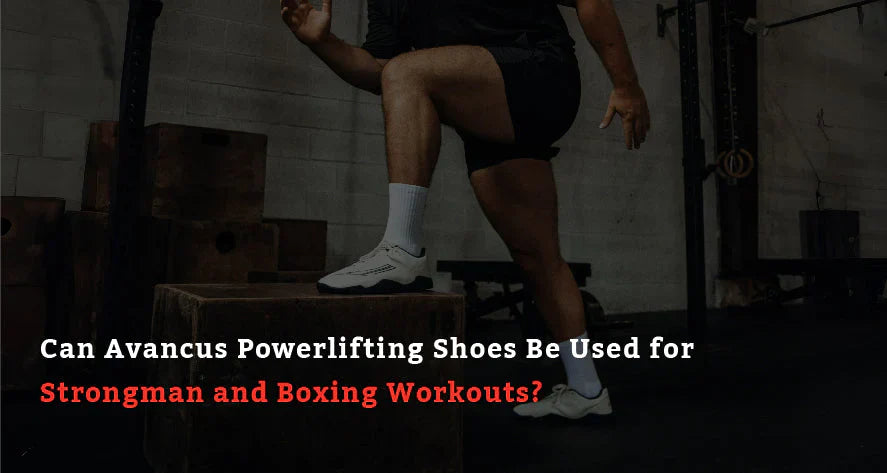
Powerlifting & Bodybuilding: The Ultimate Lift & Competition Guide
Powerlifting isn’t just about lifting heavy weights. It’s a strength sport that merges discipline, precision, and raw power. Whether you’re stepping into your first powerlifting competition or simply trying to understand how it differs from bodybuilding, this guide takes you deep into the world where strength meets art — one lift at a time.
What is Powerlifting and Bodybuilding?
At its core, powerlifting is a strength sport focused on three primary lifts: the squat, bench press, and deadlift. Each lift tests your maximum weight lifted in a single attempt.
In contrast, bodybuilding emphasizes muscle size, aesthetics, and symmetry rather than maximum strength.
While powerlifters chase numbers, bodybuilders chase shape. Yet, both share one common goal: mastery over the barbell and the body behind it.
“Powerlifting measures what your body can do. Bodybuilding celebrates what your body becomes.”
Benefits of Powerlifting Training and Bodybuilding
Powerlifting training develops raw strength, while bodybuilding refines muscular endurance and proportion. Combining both offers the best of both worlds — strength training that not only makes you strong but also sculpts your physique.
Benefits include:
-
Increased muscle mass and metabolism
-
Enhanced joint stability from controlled heavy lifts
-
Boosted mental resilience from consistent progression
-
Improved posture and core strength through compound movements
Powerlifters often discover that the mental lift — overcoming fear and fatigue — is as powerful as the physical one.
The Core Lifts of Powerlifting
Every powerlifting competition revolves around the three lifts — squat, bench press, and deadlift.
1. Squat
The squat is the king of the lifts — it tests your total-body power.
You lower yourself under the barbell, sink into a deep squat, and rise, pushing heavy weights with leg drive and core tension.
It’s a true test of grit and form.
Quick Tips:
-
Keep your chest upright.
-
Drive through your heels.
-
Always warm up your hips and knees before squatting heavy.
2. Bench Press
The bench press is your measure of upper-body strength.
It involves lowering the weight to your chest and pressing it back until your arms are fully extended.
Mastering reps here builds explosive pushing power.
Bench Press Form Checklist:
-
Keep your wrists straight under the barbell.
-
Engage your lats and drive your feet into the floor.
-
Pause the rep at the bottom to increase control and compliance in competition.
3. Deadlift
Few sights rival the raw energy of a lifter gripping the bar for a deadlift.
You pull the barbell from the ground to hip height — no bounce, no shortcuts.
It’s where powerlifting meets primal strength.
“The deadlift doesn’t lie. It’s just you, gravity, and truth.”
Which Are the Best Powerlifting Exercises?
Beyond the three lifts, smart powerlifting training involves assistance exercises that build stability, endurance, and control.
Top Powerlifting Exercises:
-
Barbell Rows — for a stronger back and better deadlift lockout.
-
Overhead Press — complements bench press and shoulder strength.
-
Front Squats — improves quad dominance and upright squat position.
-
Romanian Deadlifts — teaches hamstring tension and bar path control.
-
Pause Squats — builds power from the bottom position.
Each rep counts. Focus on control, not just the weight lifted. Remember, lifting heavy weights is a process, not a stunt.
How to Start Powerlifting
Starting powerlifting doesn’t demand superhuman strength — it demands commitment.
Beginner Steps:
-
Learn proper technique. Form trumps ego in this sport.
-
Track your progress. Record your weights, reps, and rest times.
-
Join a strength gym. Surround yourself with experienced powerlifters.
-
Find your weight class. Every competition is divided by weight class for fairness.
-
Use proper equipment. A good lifting belt and flat shoes make a difference.
If you’re serious, hire a coach who understands the nuance of strength training — from rep ranges to recovery cycles.
What Powerlifting Equipment Will You Need?
Every powerlifter should invest in essential gear for both safety and progress.
Powerlifting Equipment Checklist:
-
Barbell: The lifeblood of every lift. Choose a competition-grade bar for accuracy.
-
Weight plates: Calibrated plates ensure consistent load and balance.
-
Lifting belt: Supports your core and lower back during maximal lifts.
-
Knee sleeves & wrist wraps: Add compression and stability.
-
Powerlifting shoes: Offer flat soles and grip for the squat and deadlift.
Optional but valuable tools include chalk, resistance bands, and a training log for recording every rep and weight lifted.
Powerlifting Competitions
A powerlifting competition is the ultimate test of will and strength.
Each lifter performs three attempts in the squat, bench press, and deadlift, aiming for their highest successful weight in each.
Your final total is the sum of your best three lifts, which determines your rank within your weight class.
“A meet isn’t just about medals — it’s about meeting the version of yourself that refused to quit.”
Preparation matters: taper your training, eat for recovery, and mentally rehearse every lift. The competition platform is where lifting heavy transforms into legacy.
The Downsides of Powerlifting and Bodybuilding
Like every discipline, powerlifting and bodybuilding have their drawbacks.
Heavy training without recovery can lead to fatigue, injuries, or burnout.
Excessive focus on weight lifted may overshadow form or mobility.
Similarly, in bodybuilding, chasing aesthetics can sometimes lead to imbalance or overtraining.
Be mindful: strength should build you, not break you.
“Your body is the temple of strength — but even temples need rest.”
Conclusion
Powerlifting teaches humility through gravity. Every rep, every barbell, every competition demands patience and perseverance. Whether you dream of stepping on a powerlifting competition stage or sculpting the perfect bodybuilding physique, remember this: strength is both a pursuit and a practice.
Because in the end, it’s not just about the weight you lift — it’s about the person you become while lifting it.






